Many of us find ourselves asking how to get rid of gnats as we swat away these annoying pests that invade our homes and gardens. These tiny nuisances, known for their relentless presence around plants, food, and water sources, can turn from a minor annoyance into a major problem if not addressed promptly.
Understanding the root cause of your gnat problem is crucial, and in this blog, we’ll guide you through identifying and addressing these issues. We aim to give you the knowledge and tools to tackle current infestations and prevent future occurrences.
Whether you’re encountering gnats in your home, office, or commercial space, this blog will offer tailored advice on how to get rid of gnats. Our approach is practical, environmentally conscious, and focused on long-term solutions. So, if you’re ready to say goodbye to those gnats, read about our expert advice and proven strategies.
Identification of Different Types of Gnats
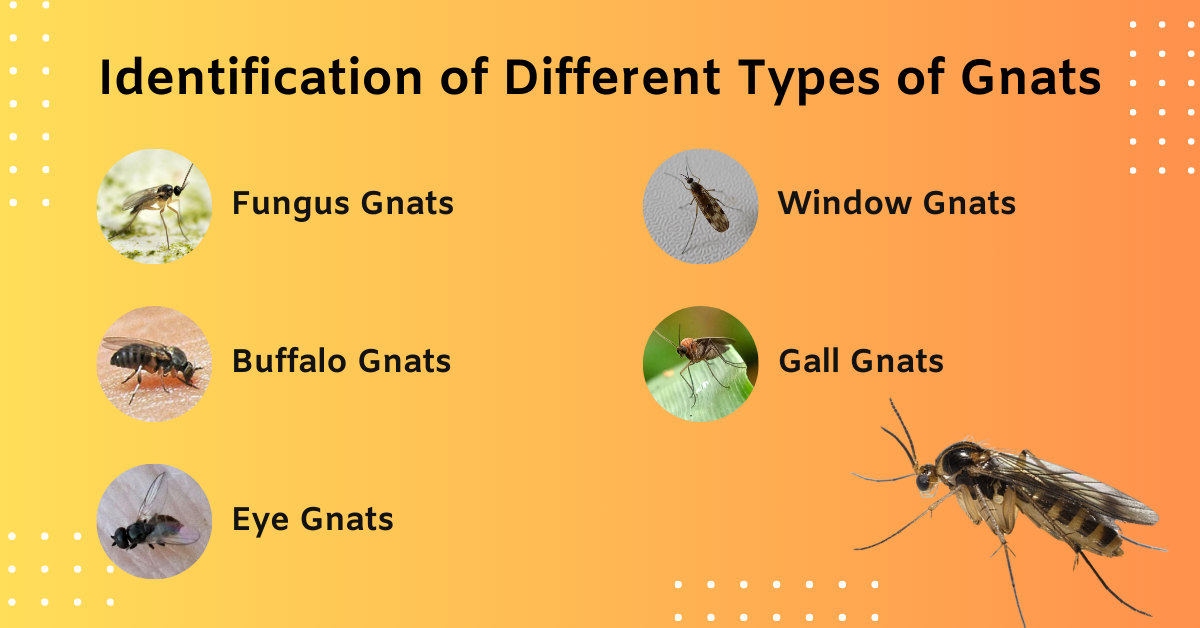
When seeking solutions on how to get rid of gnats, it’s crucial first to identify the type you’re dealing with. Different species of gnats require slightly different approaches for effective control. Here, we’ll discuss the most common types of gnats you might encounter:
- Fungus Gnats: These are tiny, with brownish-white bodies and long, spindly legs, resembling mosquitoes. However, they do not bite. Fungus gnats are small, rarely growing larger than one-eighth of an inch. They are known for their long, transparent wings and habit of flying from plant to plant. They lay their eggs in moist soil, and the larvae feed on plant materials like fungi, roots, and algae. Infested plants may begin to wilt or yellow.
- Buffalo Gnats: Also known as black flies, buffalo gnats are recognizable by the small hump on their backs and wide, transparent wings. They grow to about one-eighth of an inch and prefer wet environments near bodies of water. Female buffalo gnats are blood feeders, and their bites can cause reactions ranging from a small puncture wound to significant swelling and even ‘black fly fever,’ which includes symptoms like headache, nausea, and swollen lymph nodes.
- Eye Gnats: Often called frit flies, eye gnats are tiny, about half the size of others, and have round, black bodies with tan or brown wings. They are attracted to proteins in the fluids secreted from humans and animals’ eyes, ears, and noses. Eye gnats are known for their potential to spread diseases, including acute conjunctivitis (pink eye).
- Window Gnats: These gnats belong to the family Anisopodidae, with Sylvicola fenestralis being a common species. They often lay eggs, also known as wood gnats, in moist areas within homes. There are over 154 species of window gnats, typically feeding on decaying vegetation and found in homes during warm weather.
- Gall Gnats: Also referred to as gall midges, gall gnats are small, usually less than a tenth of an inch, and feed on plant tissue. While they don’t target human or animal fluids, they can harm crops, attacking plants like potatoes, yams, garlic, rice, and wheat. Some species in this family are used as biological control agents against plant pests like aphids.
Each type of gnat has its unique behavior and breeding habits, which can influence the method used for eradication. By accurately identifying the gnats in your space, you can tailor your approach to tackling how to get rid of gnats more effectively. Correct identification is the first and most crucial step in resolving pest issues.
The Problems Caused by Gnats
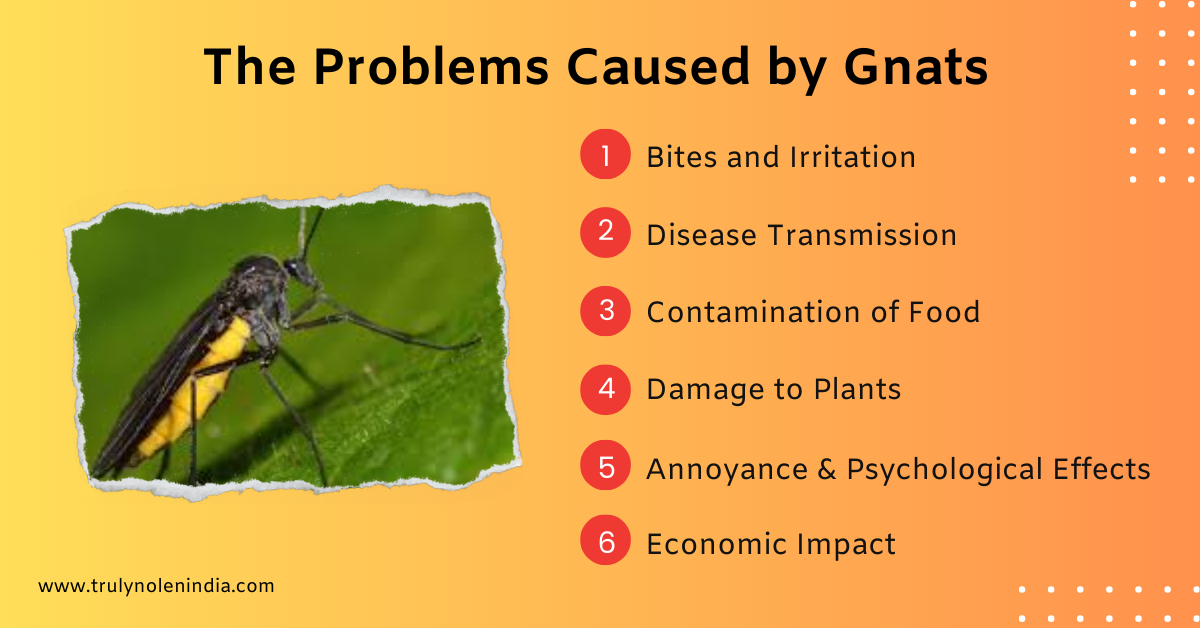
Gnats often go unnoticed until they become a nuisance that can cause many problems beyond mere annoyance. When considering how to get rid of gnats, it’s important to understand their various issues, ranging from minor irritations to more severe health and economic impacts. This understanding is crucial in addressing gnat infestations effectively and ensuring a comfortable living or working environment.
- Bites and Irritation
Species like buffalo gnats (black flies) and some midges are known to bite humans and animals. Their bites can cause irritation, redness, swelling, and, in some cases, severe allergic reactions. Biting gnats can also transmit diseases to animals, particularly livestock, leading to economic losses in agricultural communities.
- Disease Transmission
While not all gnat species transmit diseases to humans, certain types, particularly those that bite, can be vectors for pathogens. Buffalo gnats and sandflies can carry parasites and viruses that cause illnesses such as Leishmaniasis and River Blindness (Onchocerciasis). However, these are more common in certain geographic regions outside general household gnat infestations.
- Contamination of Food
Fruit flies, and other gnats that do not bite are attracted to and can contaminate food. They are particularly drawn to ripe, fermenting, or rotting organic matter. These gnats can spread bacteria and other microorganisms from one source to another, potentially spoiling food and making it unsafe for consumption.
- Damage to Plants
Fungus gnats can be a problem for indoor and greenhouse plants. While the adults are mostly a nuisance, the larvae feed on plant roots and organic matter in the soil, which can hinder plant growth and health, especially in seedlings and young plants.
- Annoyance and Psychological Effects
The presence of gnats in and around homes, businesses, and recreational areas can be a significant annoyance. Large infestations can cause psychological distress, reduce the quality of life, and impact the enjoyment of outdoor activities.
- Economic Impact
Businesses such as restaurants, hotels, and food processing facilities might face reputational damage and potential regulatory issues due to gnat infestations, leading to financial losses.
While many gnat problems are more of a nuisance than a serious threat, controlling and preventing infestations is important for health, comfort, and economic reasons. Effective management strategies can mitigate the issues caused by gnats, emphasizing the importance of identifying the specific type of gnat to apply the most appropriate control measures.
How to Get Rid of Gnats: Preventive Methods
Prevention is undoubtedly the most effective strategy in your arsenal when tackling the question of how to get rid of gnats. Creating an environment that’s less attractive to these pests can significantly reduce the likelihood of an infestation. Here are some tips:
- Regular Cleaning Regimen: Maintain a clean kitchen and bathroom. Wipe down surfaces to remove food residue, spills, and crumbs. Regularly clean drains and garbage disposals to prevent organic build-up where gnats can breed.
- Proper Food Storage: Store food, especially fruits and vegetables, properly. Use refrigeration for ripe fruits, or keep them in sealed containers. Avoid leaving cut or overripe fruits exposed in open spaces.
- Moisture Control: Gnats are attracted to moisture. Fix any leaky pipes and faucets. Use a dehumidifier in damp areas of your home, like basements, to reduce humidity levels.
- Careful Plant Watering: Overwatering houseplants can create an ideal breeding ground for fungus gnats. Allow the soil to dry between waterings, and avoid standing water in plant trays.
- Seal Entry Points: Ensure that windows and doors are properly sealed. Fine mesh screens can prevent gnats from entering your home.
- Manage Garbage and Compost: Dispose of garbage regularly and keep bins sealed. If you compost, ensure your compost bin is well-managed and located away from your house.
- Regular Inspection: Regularly inspect your home for signs of gnat activity, especially in areas where food is stored and around indoor plants.
- Drain Maintenance: Regularly clean and maintain drains, as they can be a breeding ground for certain gnats. Mix baking soda and vinegar followed by hot water to keep drains clear and odor-free.
- Outdoor Maintenance: Keep your yard and garden well-maintained. Remove decomposing vegetation and keep garden mulch at a reasonable level to avoid creating breeding grounds for gnats.
- Avoid Overripe Fruits in Open Areas: Keep fruits in the refrigerator or covered containers. Regularly check and remove fruits that are overripe or damaged.
By incorporating these preventive measures, you can create a less hospitable environment for gnats, effectively addressing the issue of how to get rid of gnats before they become a significant problem.
How to Get Rid of Gnats: Effective Methods
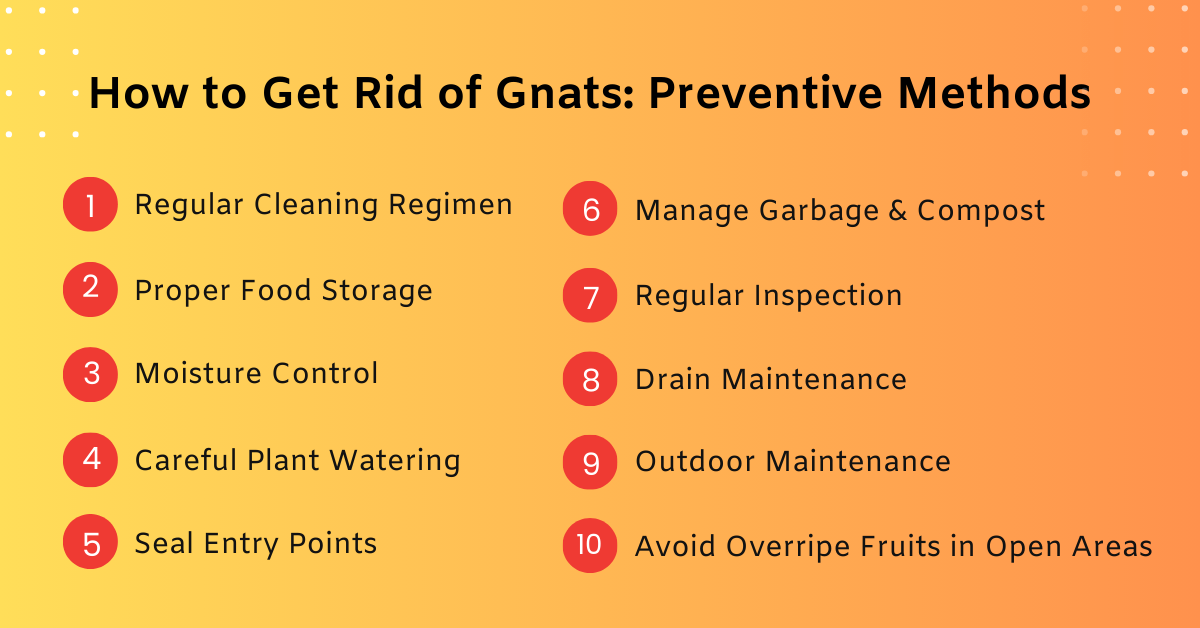
Getting rid of gnats can be challenging, but several effective methods exist to tackle these pests. Here’s a guide on how to manage a gnat infestation:
- Leverage Bug Zappers
One of the most efficient ways to eliminate gnats is using bug zappers. These devices lure gnats and then electrocute them, causing them to fall into a collection tray at the bottom. Modern bug zappers are designed to be safe for indoor use, making them suitable for placement near plants or on counters.
- Vinegar Traps for Fruit Flies
A popular method for capturing fruit flies involves using vinegar traps. You can create a trap by mixing apple cider vinegar, a teaspoon of sugar, and a teaspoon of dish soap in a bowl. The sugar attracts the gnats, the soap traps them, and the vinegar is lethal to them. Alternatively, mix apple cider vinegar and sugar in a bowl, cover it with plastic wrap, and make holes in the wrap. The gnats get lured in but cannot escape.
- Drain Cleaners for Drain Flies
To eliminate drain flies, pour drain cleaner down the affected drain, following the manufacturer’s instructions. This method helps to get rid of both adult gnats and their larvae. Always wear protective gear like a mask, gloves, and eye protection when handling drain cleaner.
- Bleaching Drains
Another approach for drain flies involves pouring a cup of bleach down the drain. Do this slowly to allow the bleach sufficient time to act on the gnats and larvae. Ensure there are no other chemicals in the drain to avoid creating dangerous fumes.
- Sticky Paper or Cards
Sticky traps are effective for various types of gnats. These traps, often yellow to attract gnats, have a sticky surface that ensnares the insects. They come in different forms, such as small cards for plant pots or hanging ribbons. Once the traps are full, they can be disposed of and replaced.
- Rely on Natural Remedies
Opting for natural remedies can be a safe and effective way to tackle a gnat problem. Here are some expanded strategies on how to get rid of gnats using household items and eco-friendly solutions:
- Apple Cider Vinegar Trap: This is a popular method for fruit flies but works well for most types of gnats. The sweet smell of apple cider vinegar attracts them, while the dish soap breaks the surface tension, trapping them. To make this trap:
-Mix equal parts of apple cider vinegar and water in a bowl.
-Add a few drops of dish soap.
-Cover the bowl with plastic wrap and poke small holes in it.
-Place it where gnats are most active.
- Essential Oil Sprays: Many essential oils, such as peppermint, eucalyptus, or tea tree oil, can deter gnats. Mix a few drops of your chosen oil with water in a spray bottle and apply it to gnat-prone areas. It’s a natural and aromatic way to keep gnats at bay.
- Red Wine Trap: Similar to the vinegar trap, gnats are attracted to the scent of red wine. Leave out a small container of red wine with a drop of dish soap to create a DIY gnat trap.
- Sticky Traps: Yellow sticky traps are effective for catching adult gnats. They can be placed near infested areas, especially plants, to trap flying gnats.
- Homemade Gnat Repellent: Create a natural repellent using lemon-scented liquid soap, lemon-scented ammonia, and water. Spray it around doorways, windows, and other entry points.
- Citronella Candles: If gnats are a problem outside, citronella candles can help keep them at bay. The scent is a natural deterrent for many types of insects, including gnats.
- Rotten Fruit Trap: Place overripe or rotten fruit in a jar, cover it with plastic wrap, and make holes. Gnats will be attracted to the fruit and get trapped inside.
- Consider Professional Help
Despite all efforts with home solutions, gnats can persist, indicating a deep-rooted and challenging infestation. This is where professional pest control services become indispensable in how to get rid of gnats. Expert pest controllers bring in-depth knowledge of various gnat species, access to advanced treatment methods not available to the public, and offer long-term, effective solutions.
They ensure safety, save time, and provide customized approaches tailored to your situation. For severe or hard-to-tackle infestations, especially in commercial settings, seeking professional help is often the most efficient and reliable way to ensure a gnat-free environment.
Say Goodbye to Gnats with Truly Pest Solution!
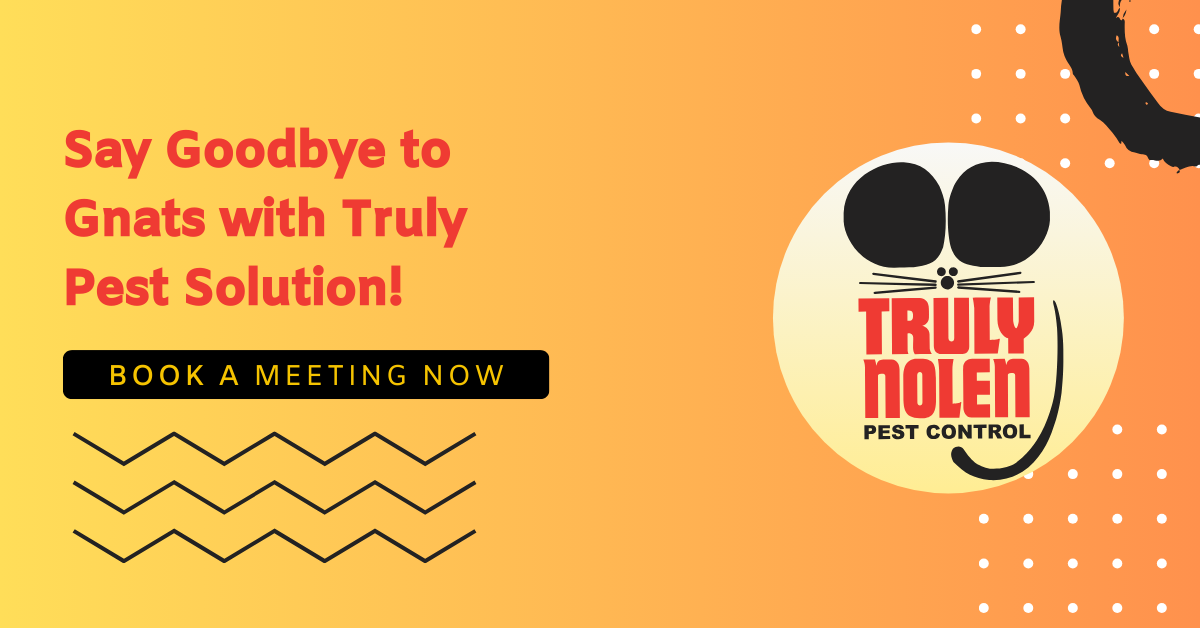
To get rid of gnats can be challenging, but with the right approach, it’s achievable. Start with preventative measures, try natural remedies, consider chemical solutions if necessary, and don’t hesitate to seek professional help if the problem persists. Remember, the key to getting rid of gnats lies in understanding their habits and habitats.
Truly Pest Solution offers more than just a pest control service; it’s a commitment to maintaining a safe environment. We specialize in tackling unique challenges with innovative, eco-friendly, and hassle-free solutions. Our approach is designed to minimize the use of chemicals, ensuring the safety and well-being of your space.
With IFCS (Intelligent Fly Control Service), we offer a detailed and integrated pest management service designed to reduce fly infestations effectively. The primary objective of this service is to identify and eradicate the breeding grounds for larvae, which is crucial for successful fly control. Such an approach ensures a comprehensive solution to the problem, addressing both the immediate infestation and preventing future occurrences.
Contact us and Book a Meeting now!
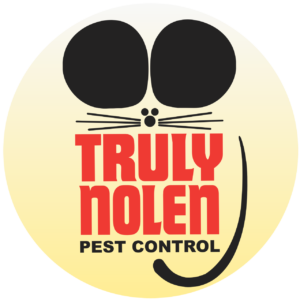
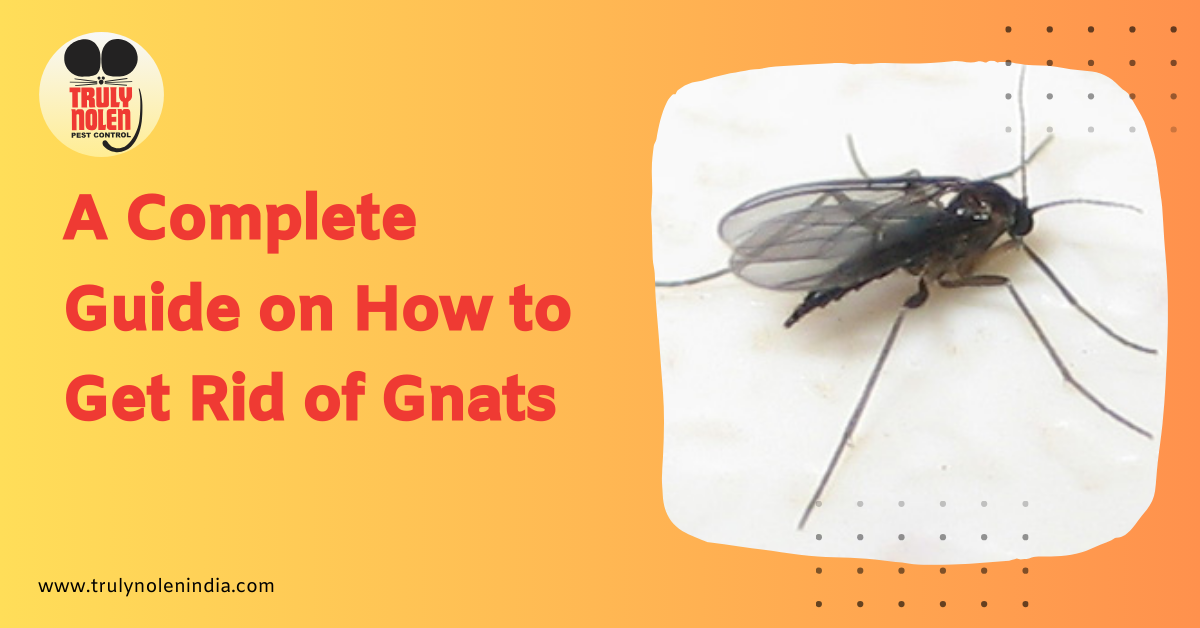
Leave a Reply